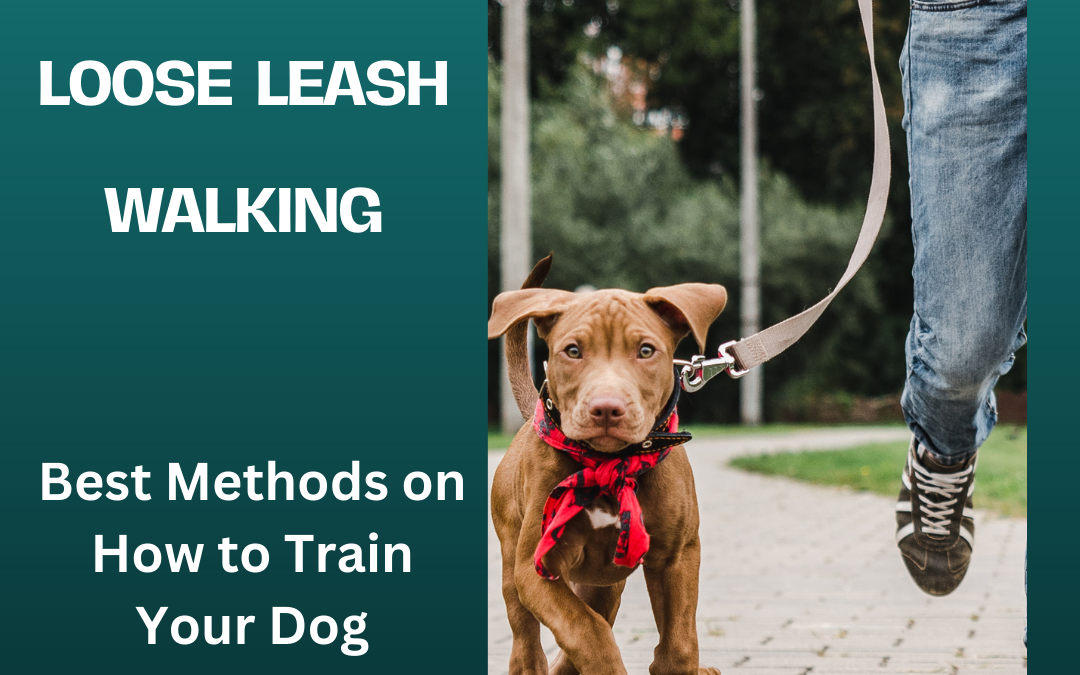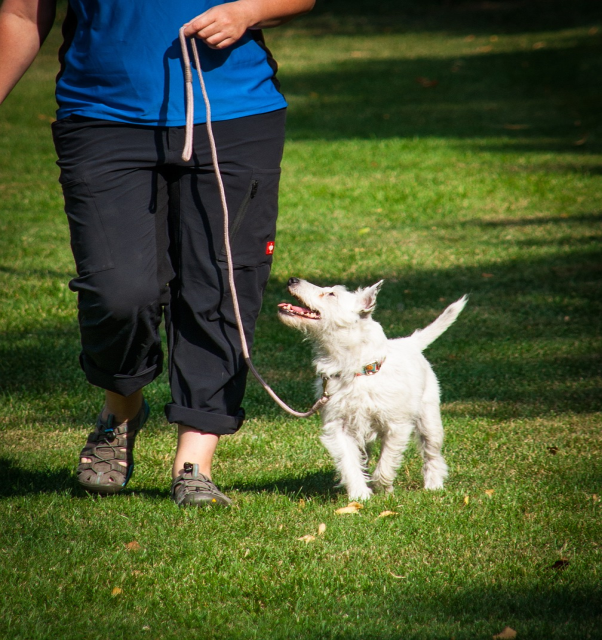Loose Leash Walking: Best Methods on How to Train Your Dog
Loose leash walking your dog should be a pleasant experience for both you and your furry friend. However, if your dog pulls on the leash constantly, it can turn a leisurely stroll into a frustrating battle of wills. Loose leash walking is the solution to this common problem. But how exactly do you train your dog to walk politely by your side?
Understanding Loose Leash Walking
Before diving into training techniques, it’s crucial to understand what loose leash walking entails. Essentially, it means teaching your dog to walk calmly beside you without pulling on the leash. So, this requires teaching your dog to pay attention to you. As well as keep a consistent pace and respond to cues promptly.
Positive Reinforcement: The Key to Success
When it comes to training any behavior, positive reinforcement is paramount. Instead of punishing your dog for pulling, reward them for walking nicely by your side. Use treats, praise, or toys to motivate and reinforce the desired behavior. Dogs thrive on positive feedback. And they’re more likely to repeat behaviors that result in rewards.
Start in a Distraction-Free Environment with Loose Leash Walking
Again, begin your loose leash walking training in a quiet, familiar environment with few distractions. This could be your backyard or a quiet street with minimal foot traffic. Above all, starting in a distraction-free zone allows your dog to focus on learning. Thus, without being overwhelmed by external stimuli.
Use Proper Equipment for Loose Leash Walking
Invest in the right equipment to set your dog up for success. Specifically, a well-fitting harness or flat collar and a sturdy leash can make a difference. Avoid retractable leashes, which encourage pulling and can be dangerous in certain situations. Select a standard leash that allows you to keep control. And communicate effectively with your dog.
Practice Consistency and Patience
Consistency is key when it comes to training any new behavior. Loose leash walking is no exception. Maybe set aside dedicated time each day to work on walking skills with your dog. Even more, keep training sessions short and enjoyable. To keep both you and your dog from getting frustrated. Remember to be patient; learning takes time, and every dog progresses at its own pace.
Use Verbal and Visual Cues for Loose Leash Walking
First, teach your dog verbal and visual cues to signal when they’re walking nicely beside you. You may want to use phrases like “heel” or “let’s go” consistently during training sessions. It is equally important to supplement these verbal cues with visual cues. For example, you could make a hand gesture or hold a treat by your side. Because with practice, your dog will learn to associate these cues with the desired behavior.
Be Prepared for Setbacks
Training a dog to walk politely on a leash is a gradual process, and setbacks are inevitable. After all, your dog may regress or become distracted during training sessions. Especially when exposed to new environments or stimuli. Stay patient and remain consistent in your approach. So, celebrate small victories and continue to reinforce positive behaviors.
Seek Professional Help if Needed with Loose Leash Walking
If you’re struggling to make progress with loose leash walking, don’t hesitate to seek help. Certainly, from a professional dog trainer.
A certified trainer can assess your dog’s behavior. I will probably find any underlying issues and provide personalized guidance and support. Remember, there’s no shame in asking for help. Sometimes, a fresh perspective can make all the difference.
Conclusion of Loose Leash Walking: Best Methods on How to Train Your Dog
Mastering loose leash walking is achievable with the right techniques and plenty of patience. Specifically, by understanding the principles of positive reinforcement. Most noteworthy, start in a distraction-free environment. In addition, use proper equipment and maintain consistency. In that case, you can teach your dog to walk politely by your side. Remember to be patient, stay consistent, and celebrate each small success. With time and dedication, you and your furry companion can enjoy peaceful and enjoyable walks together.










